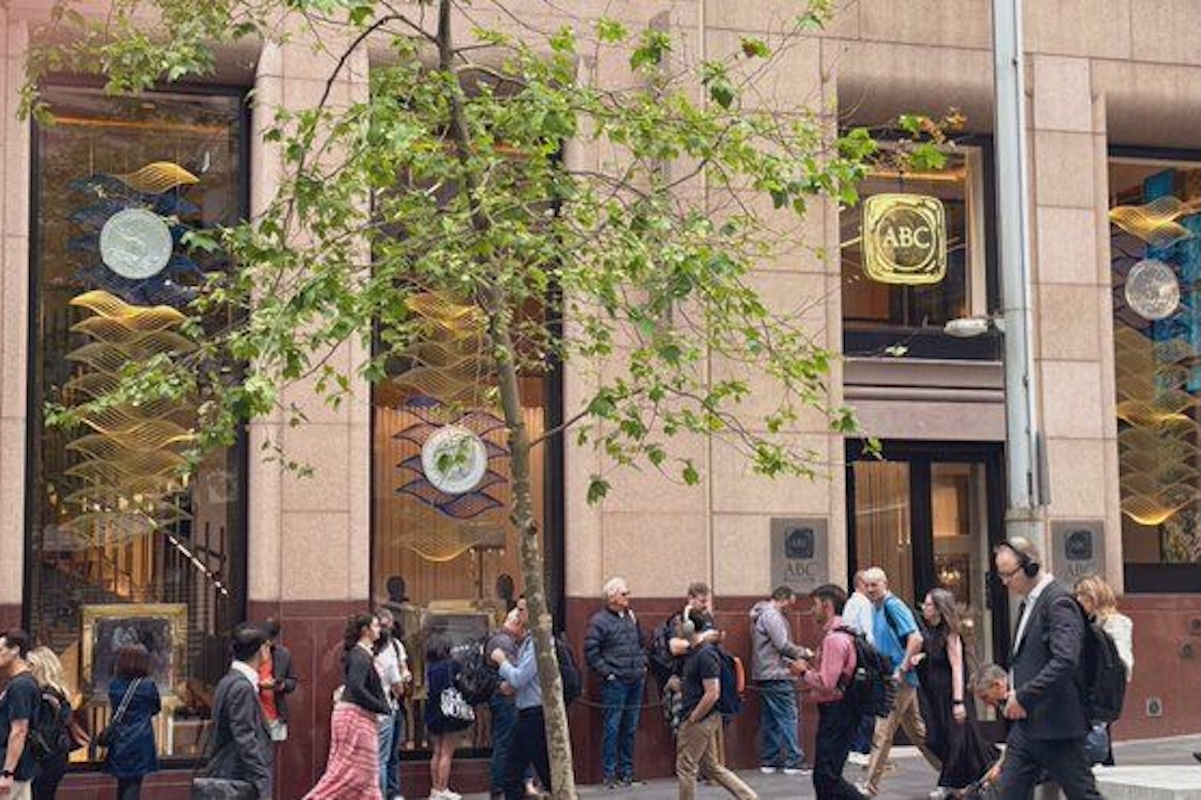

You'd think there was a new iPhone on sale or an exclusive sneaker drop to see the queues of people in Sydney's Martin Place yesterday. But instead of camping out for The Next Big Thing, punters were piling into ABC Bullion's boutique in Martin Place to buy gold.
The scene looked more like something out of a panic-stricken market crash than a quiet weekday morning in the city’s financial heart. The spark? Gold’s price cracked the US$4,000 an ounce barrier: a record that not only set headlines spinning but also sent a very real signal to those who see gold as the last safe haven when everything else feels fragile. Inside the store, staff kept up with the demand for gold bars and coins, as people from all walks of life waited patiently for a chance to buy.
The surge in gold buying across Sydney is not just about chasing a headline price. It’s the result of a broader atmosphere of uncertainty that has been building both globally and at home. In the past year, gold’s price has nearly doubled, a run that’s been anything but gradual. Investors and everyday Australians alike have watched as the metal has climbed from just above US$2,300 at the start of the year to break the US$4,000 mark—a milestone that has become a psychological trigger.
This sudden demand is underpinned by several overlapping anxieties. Political instability has been a persistent theme, with Australia’s own policy gridlocks echoed by election tensions in the United States and uncertainty spreading across Europe. The feeling that traditional assets are suddenly at risk has only grown as a new round of trade hostilities between major economies threatens global growth. Tariffs between the United States, China and Europe have already impacted Australian exports, casting doubt over the security of both jobs and investments here at home.
In addition, the world feels faster and somehow more dangerous than it has in years. Ongoing conflicts in Eastern Europe and the Middle East have kept markets on edge. Tensions in the Asia-Pacific region have made investors deeply aware of how quickly supply chains and financial systems can unravel. Gold, with its long history as a store of value in troubled times, has naturally become the asset people turn to when geopolitical headlines start to sound like warnings rather than just news.
Underneath the rally in precious metals is a deep unease about the stock market itself, especially among investors who remember how quickly optimism can turn into crisis. Over the past two years, global equities have surged to historic highs, fuelled in large part by the extraordinary performance of technology companies promising to change the world through artificial intelligence. In the United States, the so-called “Magnificent Seven” tech giants have led the charge, pushing markets up and pulling sentiment with them.
But with each new record on Wall Street, there’s been a growing chorus of sceptics who see dangerous echoes of the dot-com boom of the early 2000s. Many analysts have started warning that the enthusiasm for AI could be running ahead of reality. The concern is that if this optimism proves misplaced and the billions sunk into AI is all for nought, the correction could be sudden and severe. The prospect of an AI bubble bursting, dragging the rest of the equities market down with it, is no longer dismissed as a fringe theory. It’s openly discussed in boardrooms, in financial media, and increasingly among ordinary investors.
Against this backdrop, gold is seen as more than just a hedge against inflation or currency devaluation. It is insurance against the kind of market chaos that can wipe out years of gains in a matter of weeks. The queues outside ABC Bullion aren’t just a response to headlines about war or trade; they’re a sign that faith in the current bull market is wearing thin, and that many Australians want something tangible to hold onto if the bottom falls out of tech stocks or the broader share market.
Of course, some could be sellers with prices at highs like this! We'll keep an eye out for more queuing tomorrow.